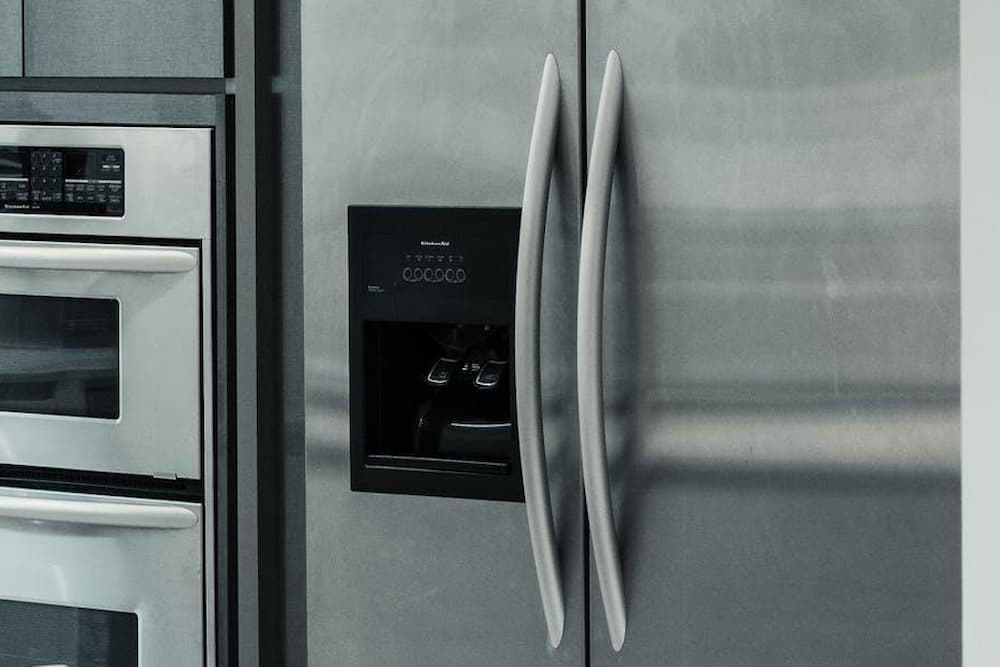* We independently evaluate all recommended products and services. If you click on links we provide, we may receive compensation.
Refrigerators are one of the many long-lasting kitchen appliances. The average lifespan of a refrigerator as per the National Association of Home Builders is 13 years. This is longer compared to appliances like dishwashers, washing machines, freezers, and trash compactors. You can also read another article about how long so dishwashers last to serve as a contrast.
While this may be the average number of years of their lifespan, it can be longer or shorter based on several factors. These factors are maintenance habits, brand, size, and the placement of the fridge. You can thus, make your refrigerator last for longer. Maintenance and replacement of parts play a vital role.
This article will give you tips on properly maintaining your fridge. The step-by-step guide will break it down based on cleaning and other maintenance habits that you need to indulge in. It also discusses some indicators of when it is time to replace your fridge.
- Cleaning Habits (Steps 1-3)
- Other Maintenance Habits (Steps 4-6)
Cleaning Habits (Steps 1-3)
Cleaning your refrigerator and its parts a certain way does play a vital role in making it last longer. The following steps pertain to cleaning.
Steps 1: Cleaning the condenser coils
Condenser coils help keep your fridge cool. Thus, cleaning them at least once every six months makes a lot of difference. The coils attract buildup, dirt, dust, and animal fur (if you have pets). Use a duster to clean them and also a vacuum – with the hose attachment – to ensure proper cleaning. The condenser coils are found under the bridge, usually behind a plate or a grate. In some cases, however, it is also found at the back of the fridge.
Steps 2: Cleaning and lubricating door seals
You might be wondering why you need to clean the seal right? Well, their role is to prevent the air from escaping. Similar to the coils, they need to be cleaned regularly to make sure they do their job well. Using a mixture of soap and warm water is all you need to clean the doors of both the fridge and the freezer.
Moreover, sometimes the seals can become damaged because of wear and tear. Therefore, keep checking them for any tears in case they need replacing. Another way to prevent tears is to lubricate the seals. This allows them to retain their elasticity. Simply applying Vaseline to the edge will get the job done.
Steps 3: Cleaning the vents
Every refrigerator comes with vents placed inside. They allow for cold air circulation within the unit. However, over time these are blocked because of dust, dirt, food, or liquids. This buildup reduces the efficacy of the vents and leads to poor air circulation. Cleaning the vents with a warm, semi-wet rag prevents these blockages and helps your refrigerator last longer.
Here’s a video that can further help you understand how to clean refrigerators:
Other Maintenance Habits (Steps 4-6)
The following steps are steps that you can take as part of the maintenance, replacement, and more.
Steps 4: Maintaining a stable fridge level
You can see whether your fridge is leveled or not by tipping it a little. If it goes down from one corner even a little, then the fridge isn’t leveled. It may seem like this will not affect the refrigerator’s lifespan but it does. It puts strain on the motor and that leads to a shorter lifespan. Therefore, adjust the feet of the fridge if they aren’t leveled. Using a leveler on the top while adjusting it helps reach the perfect level.
Steps 5: Give it space
The refrigerator needs its space to function properly. Make sure there are a few inches behind, in front, and on the sides of the refrigerator. Moreover, placing things and objects on top of the refrigerator must be avoided at all costs. Space allows the refrigerator to operate fully and allows it to get the airflow that it needs. The airflow can be restricted if the refrigerator is placed in a tightly closed space or too close to other appliances, cabinets, etc.
Steps 6: Timely troubleshooting
Keeping checks on the refrigerator’s functioning, parts, etc. is key. Moreover, dealing with the malfunctions, wear and tear on time stops the damage from becoming serious. Here are some of the common troubles that may arise and how to deal with them.
- Sometimes, the fridge leaks some water. You will see this as a puddle of water below the fridge. This means the water supply to the ice or water dispenser may have been hindered. This can be fixed by unplugging the fridge, closing the water supply, and replacing the supply line especially if you see it as cracked or leaking.
- If the fridge starts producing sounds, then it often is a sign that the fan keeping the condenser coils cool is the culprit. Before checking it, make sure to unplug the refrigerator first. The fan is found in the compartment where the condenser coils are situated. Replace the fan if the blades are worn or damaged.
- If you find a liquid leaking inside the fridge then it might be because the drain tube is producing too much moisture or has stopped working. To fix this, find the drain plug (at the back of the fridge wall), and empty the shelf. Fill a meat injector (syringe) with a solution of warm water and bleach and pour it over the drain plug. Clean the dirty water that settles on the drain pan once done.
When is it time to replace your refrigerator?
As discussed above, a refrigerator’s lifespan differs based on several factors, so there isn’t a set time for how long yours may last. So, then how does one know that it’s time to replace the fridge? The following are some indicators that let you know that it’s time to get a new one.
- When the back of the refrigerator produces an exorbitant amount of heat.
- Food regularly going bad despite keeping the temperature below 40 degrees Fahrenheit.
- When the door gaskets of the fridge are in decent condition, but there is condensation found inside the fridge.
- The fridge produces a buzzing sound even when it is plugged and restarted.
- Frozen foods from the freezer are often covered by a layer of frost.
- Utility bills are shooting up even though your appliance usage patterns have not changed. You can even use an energy monitor that tracks your usage. It is plugged between the fridge and its outlet and will indicate whether the wattage is more than what it has been in the past.


